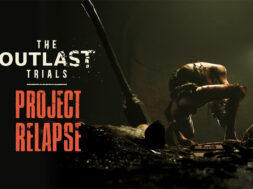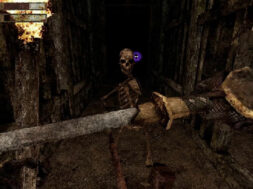![‘Boxing Helena’ Deserves Love for Its Fearless Leading Duo [We Love ’90s Horror]](https://scaryoverload.com/wp-content/uploads/2024/03/helena-1.jpg)
I’m trying to decrease my usage of “good” and “bad” when discussing art. They are lazy shortcuts that distill creativity into the simplest qualitative assessments as if art is worth boiling down to a pure binary outlook. It’s why whenever any movie is widely labeled “good,” I can’t help but approach it with some increased skepticism. Conversely, “bad” movies always pique my interest, and I’m more likely to look deeper for their successful elements than what I find from the consensus.
This is the case with Boxing Helena, a film brutally derided in that repellant way critics love when they taste blood in the water. The directing and feature writing debut of Jennifer Lynch, Boxing Helena was savaged across the board and overshadowed by legal battles involving major stars who dropped out of the Helena role. With the film never making the leap from DVD and no official digital release available, there is an overall dismissive read of Boxing Helena as nothing more than a “bad” movie and thus worth forgetting.
Not on my watch.
Boxing Helena is a disarming (heh) modern-day fairy tale about Nick Cavanaugh (Julian Sands), a prominent surgeon who is obsessed with Helena (Sherilyn Fenn), a woman he can’t get over. After Helena is injured in a hit-and-run, Nick takes her from the scene and confines her to his house under the guise of medical treatment. To exert more control over her, he cuts off her legs and says it was necessary after her injuries. Thus begins a warped riff on Beauty and the Beast that will reveal itself to be a very specific (and divisive) kind of nightmare.

Now, it is worth noting that Boxing Helena is not flawless in its execution. Lynch did not expect to direct the script she wrote and her first-time instincts as a visualist are often the least engaging parts of the movie. The story’s attempts at escalation often conflict with the purposeful static nature of its central dynamic. So, even though the plot and characters are moving forward, the overall mood is one of stillness and reflection. This dissonance creates a “nothing is happening” effect even though that’s not the case. Combined with Lynch’s inexperience and surprise at having to helm the film in total as director, it’s as a piece of cinema where Boxing Helena feels at its shakiest.
However, Boxing Helena excels as an examination of confusing obsession with love. Nick is a sheltered prince, made to believe in a certain kind of romance that isn’t reflective of actual affection or care. That makes his role as a surgeon (read: caregiver) all the more poetically sinister. And it’s through Helena’s perspective we see the kind of sick admiration women fear from men who view themselves as idealized romantics in their own twisted version of chivalry. We’ll get to Helena’s perspective later as it’s one of the most ridiculed portions of the movie, but suffice to say that Boxing Helena captures the paranoia of an obsessive lover with fantastical grace.
But the strongest reason Boxing Helena doesn’t deserve its reputation is its cast. While it’s obviously delightful to see folks like Bill Paxton, Kurtwood Smith, and even Art Garfunkel pop up in supporting roles, this is a film carried by two dream-woven performances by Julian Sands and Sherilyn Fenn. The tragic death of Sands was the impetus behind tracking down a copy of Boxing Helena and it’s one of his most compelling roles. Sands always felt like he’d stepped into our realm from some Other Place. A unique and mystical presence, Sands is terrifying in his portrayal of Nick as a true man-child, regressing into a schoolboy demeanor that masks the monster Helena sees. Sands injects a genuine naivete into Nick that only strengthens how scary his obsession with Helena is. Actors who play villains often say they don’t view their characters as villainous in order to understand and empathize with the character’s perspective. Sands takes that to the extreme as Nick and it’s chilling.

Sherilyn Fenn adds a harmonious resonance with Sands as one of those actors that I’d believe actually came from Tolkien’s Middle-earth. Fenn radiates dark fire as Helena, a free spirit confined to being nothing more than an object of worship for a lonely weirdo. The melodrama and intensity Fenn is asked to display is demanding of any actor and she keys in with the story’s tone quite well.
The most contentious part of the movie comes when we are told everything we’ve seen after the hit-and-run has been Helena’s dreams and Nick actually took her to the hospital where she’s been recuperating. It’s here where Helena’s perspective recontextualizes everything and we realize this has been her nightmare. When we know that Nick has been by her side during her recovery, Fenn’s final moments of seeing that as ominous instead of endearing make the film’s foreboding fantasy all the more stronger. Unfortunately, most reads of Boxing Helena fall back on an undercooked “it was all a dream? That’s bad!” simplification that ignores the ever-present themes Lynch explored in the story.
Boxing Helena is much more than just a “bad” or “good” movie. It’s an earnest attempt at delving into the murky waters of devotion and the evils that lie in those depths. And it’s unfair that Boxing Helena should languish in obscurity when its two leads deliver fearless performances bereft of ego. Don’t let this get boxed away and lost to memory just because it’s “bad.”
The ‘90s often get a bad rap with horror fans. After the numerous successful slashers and creature effects films of the ’80s, the ‘90s offered a different variety of horror fare. Though there were plenty of hits, hidden gems, and misunderstood classics, the ‘90s usually don’t get the kind of love that other decades get when it comes to horror. It’s time to change that.
The post ‘Boxing Helena’ Deserves Love for Its Fearless Leading Duo [We Love ’90s Horror] appeared first on Bloody Disgusting!.









